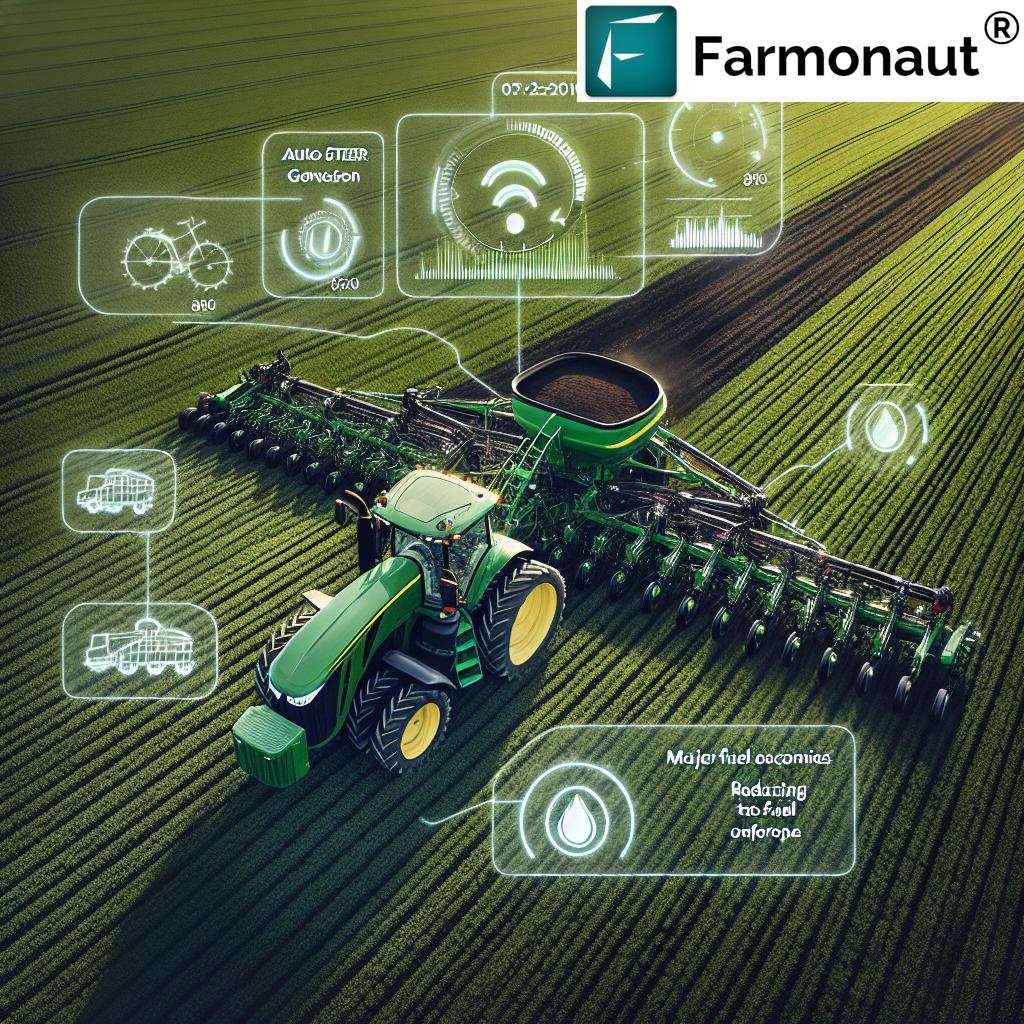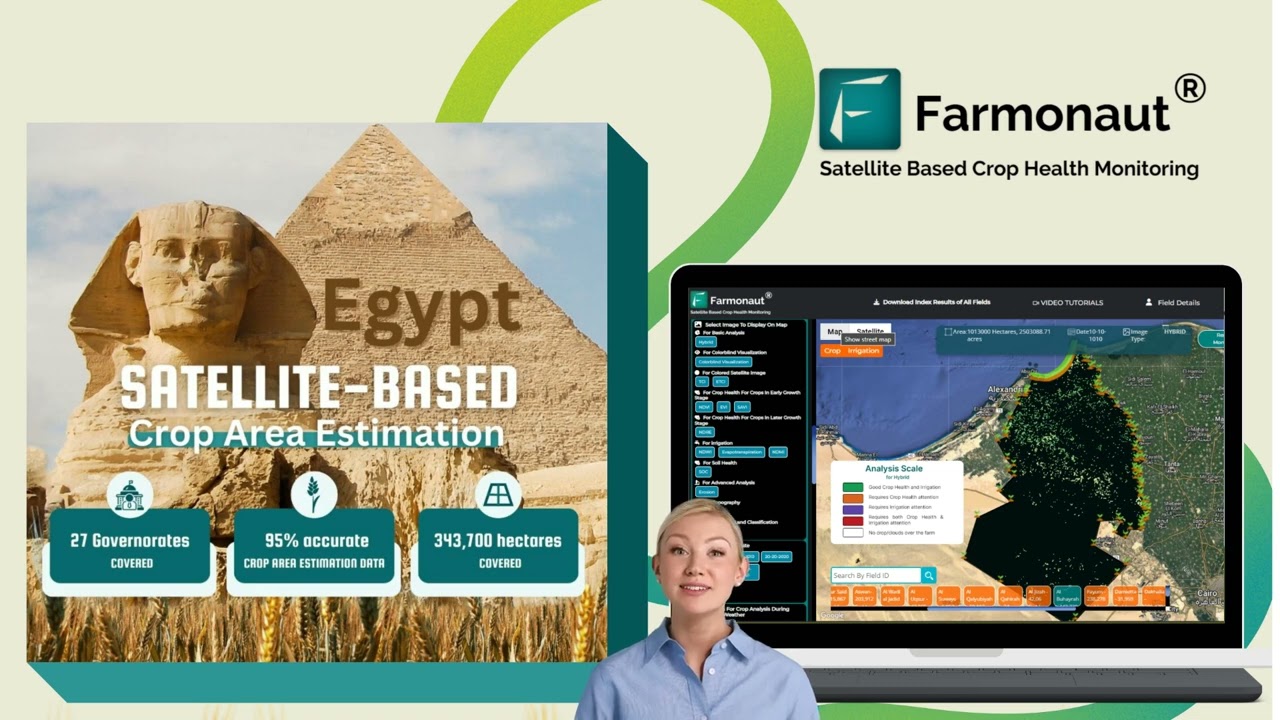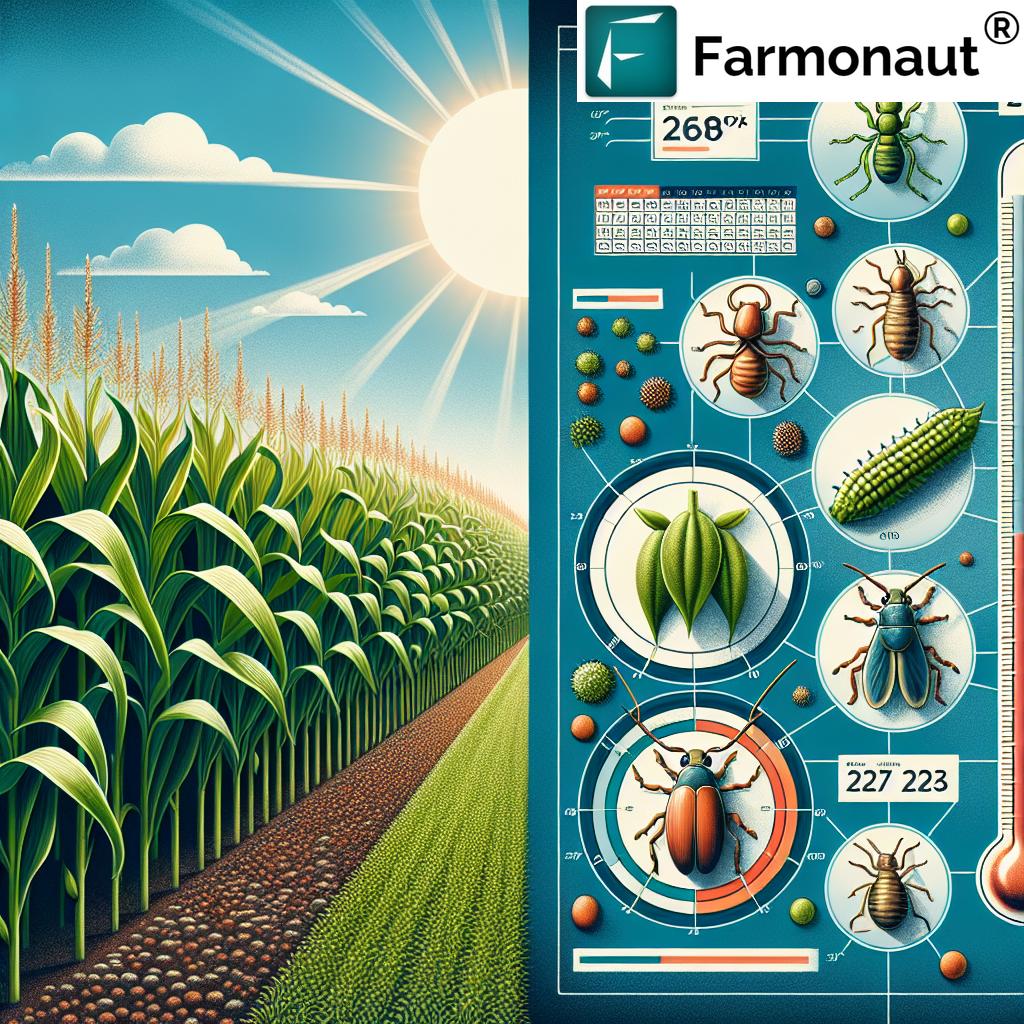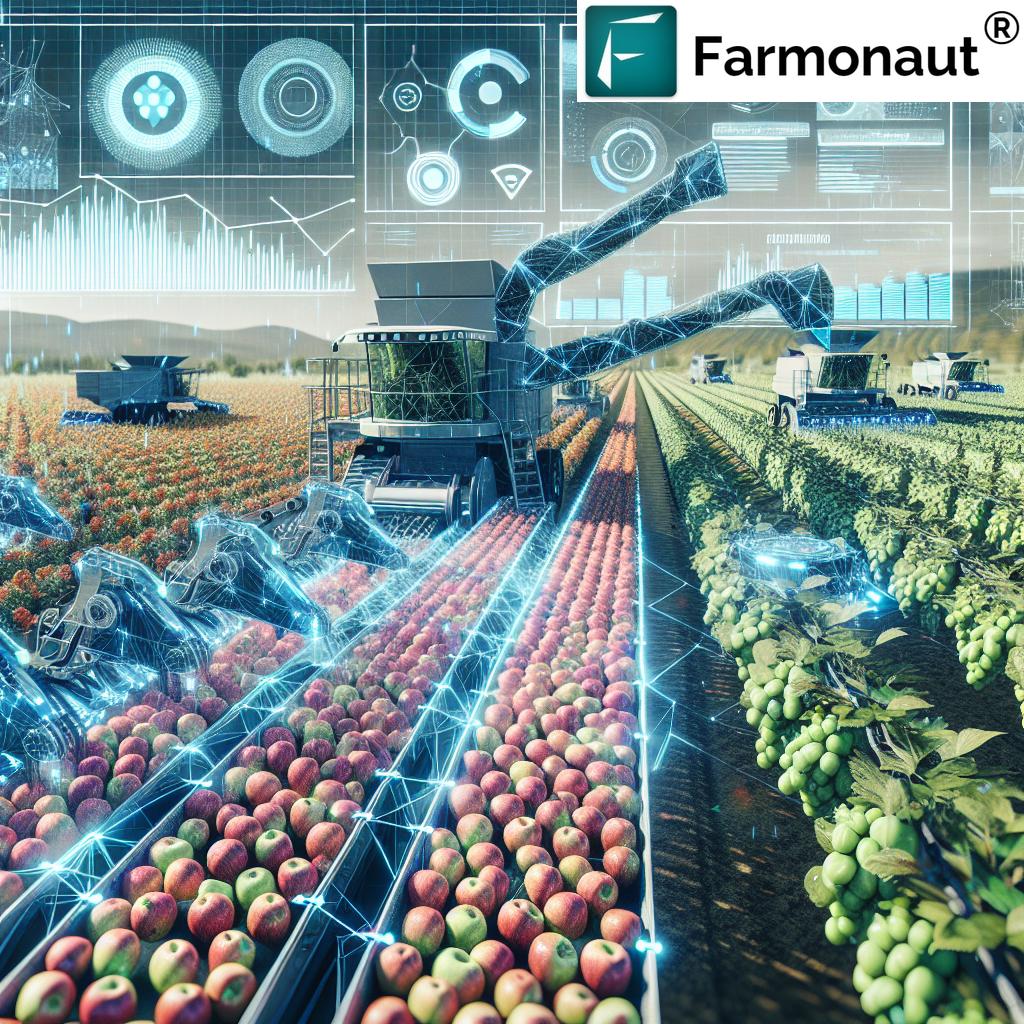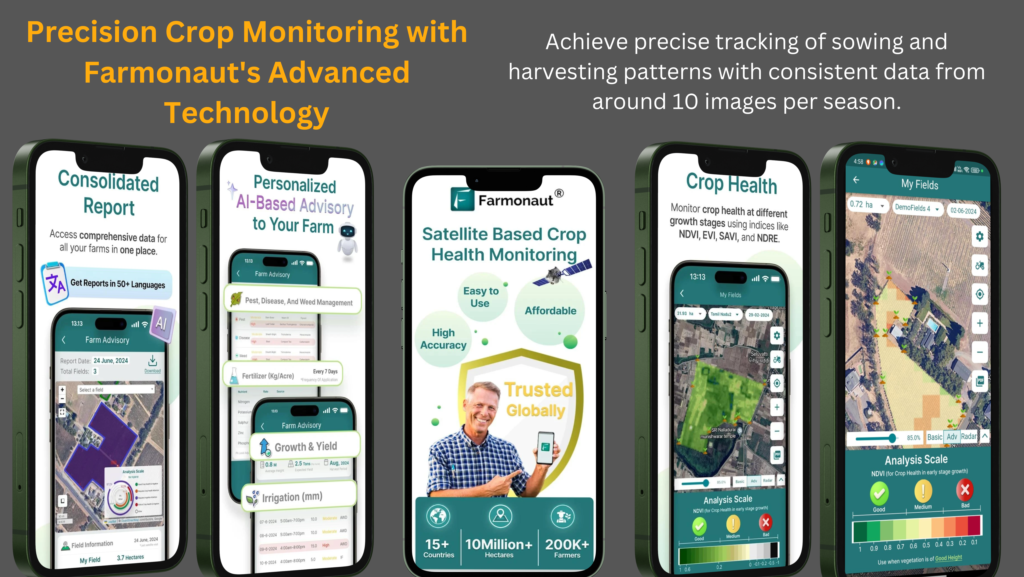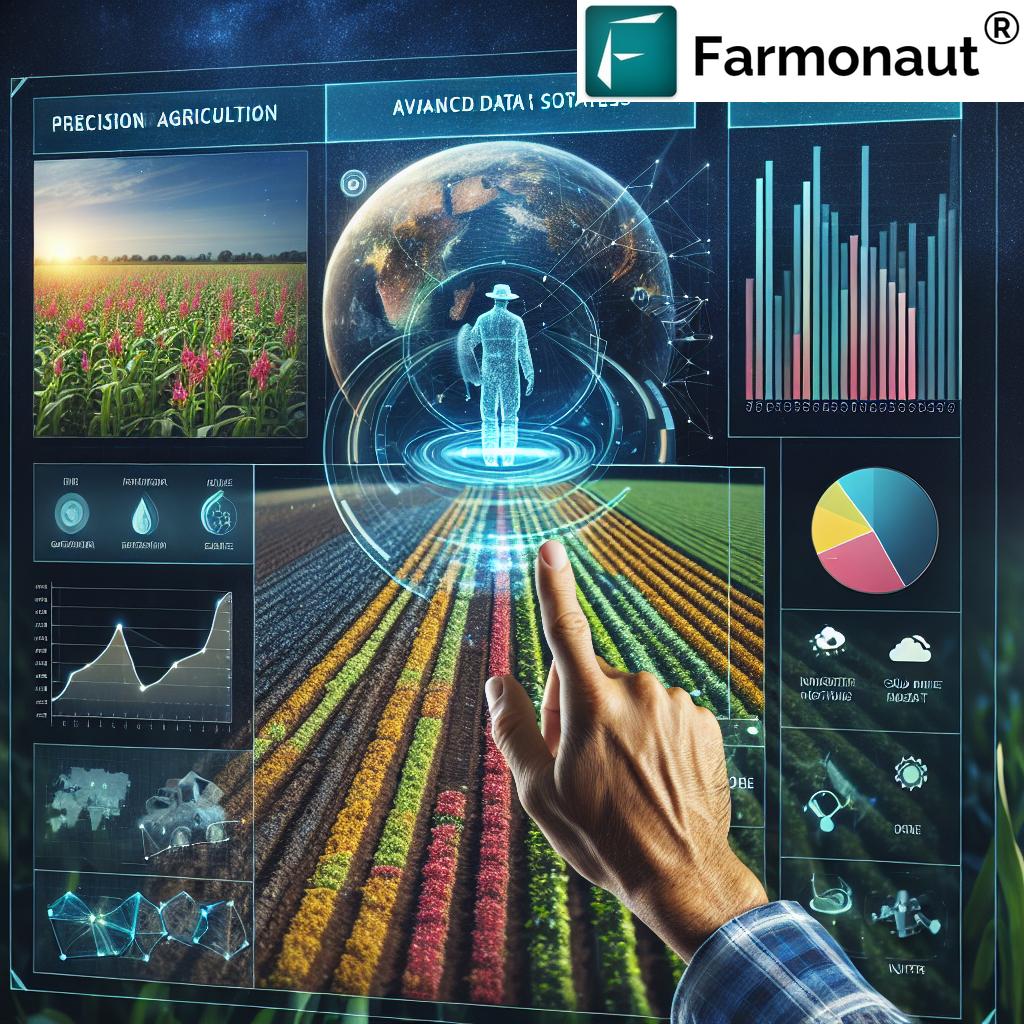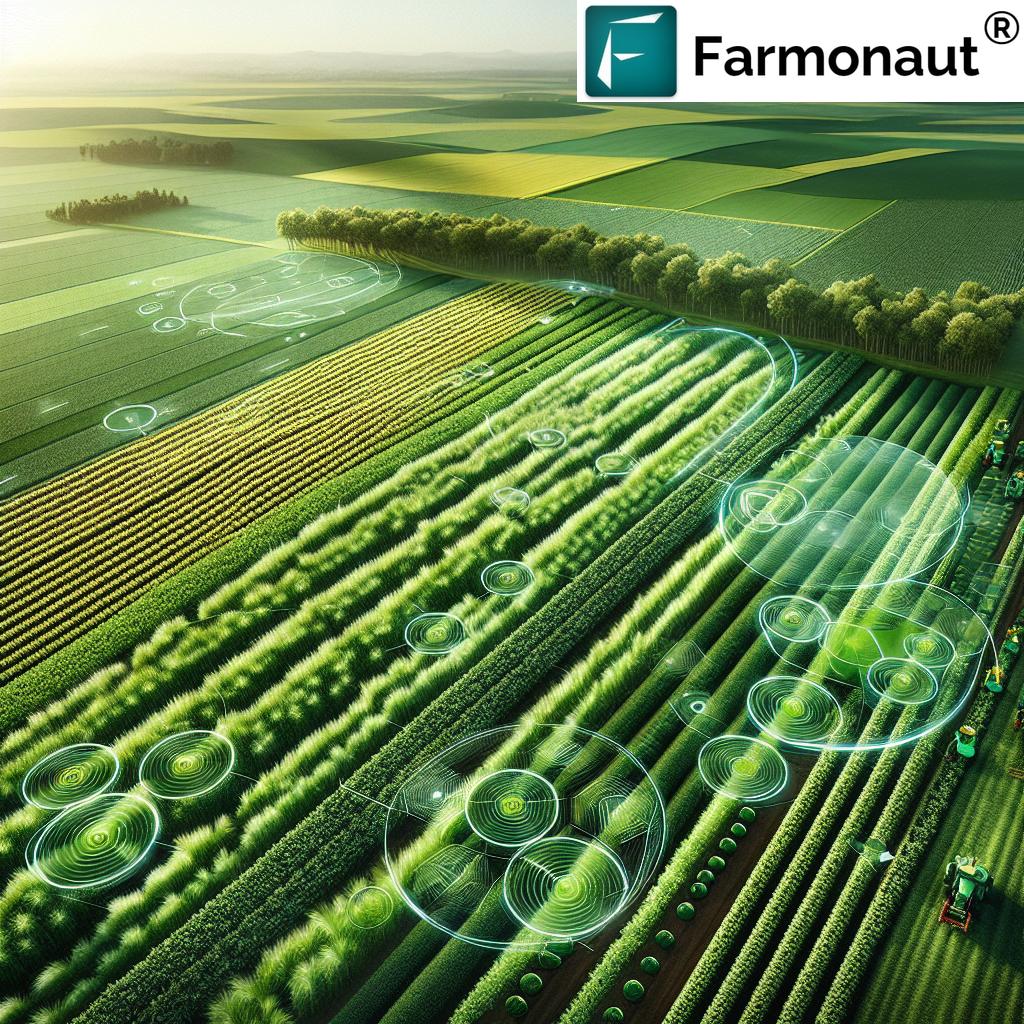How Much Could Precision Agriculture Save Farmers in Fuel?
Table of Contents
- Introduction
- Understanding Precision Agriculture
- Mechanisms of Fuel Savings in Precision Agriculture
- Quantifying the Fuel Savings and Financial Impact
- Comparative Savings Table: Technology Versus Tradition
- Broader Economic and Environmental Benefits of Precision Agriculture
- How Farmonaut’s Technology Supports Precision Agriculture
- Challenges, Limitations & Considerations
- Frequently Asked Questions
- Conclusion
Introduction: Precision Agriculture and the Path to Fuel Savings
In modern agriculture, efficiency and sustainability have become central objectives for farmers worldwide. Rising fuel prices, tightening margins, and increased scrutiny of environmental impact demand innovative technologies that can transform conventional farming practices. Enter precision agriculture—an integrated, technology-driven approach that leverages GPS guidance systems, variable rate technology (VRT), and automated machinery to revolutionize field operations and maximize resource utilization.
Among the many advantages of precision agriculture, the most tangible—especially for cost-conscious farmers—is the substantial reduction in fuel consumption. By enhancing the precision of input applications, minimizing overlaps, and optimizing machinery movement, these fuel saving technologies in farming have the potential to deliver significant savings per acre, year after year. But just how much could precision agriculture save farmers in fuel, and what does this mean for the broader agricultural landscape?
This comprehensive guide explores the core mechanisms behind fuel savings in precision agriculture, quantifies potential reductions, and delves into both the direct economic and indirect environmental benefits that make these technologies indispensable for modern farms.
Keywords in focus: precision agriculture, fuel, savings, GPS, VRT, field, guidance, technologies, consumption, farmers, benefits, practices, reduction, application, input, machinery.
Understanding Precision Agriculture: Key Concepts and Definitions
Precision agriculture represents a fundamental shift from “one-size-fits-all” farming to approaches that monitor and manage variability in crops and field conditions at the most granular level possible. Instead of treating every acre identically, farmers using precision tools can tailor the application of vital inputs—such as water, fertilizers, pesticides, and seed—based on detailed data from specific areas in each field. This technology-led approach allows for:
- Efficient use of machinery, fuel, and inputs
- Reduction of waste and environmental footprint
- Improved yields and operational efficiency
Core Technologies Behind Precision Agriculture
- GPS Guidance Systems for Farms: These help keep tractors and implements on precise field tracks, minimizing overlap and skip in operations.
- Variable Rate Technology Benefits (VRT): Allows for the precise application of fertilizers, seeds, and chemicals based on localized soil and crop data, reducing unnecessary passes and saving fuel.
- Automated Machinery in Agriculture (Autosteer and Section Control): Machine guidance and automation enable consistent, accurate field coverage with minimal human error.
- Sensors, Data Analytics & Satellite Monitoring: These systems monitor and analyze field data, optimizing decisions on-the-go.
By leveraging these advanced technologies, precision agriculture elevates farm management beyond routine to truly smart, data-driven practices.
Mechanisms of Fuel Savings in Precision Agriculture
Fuel efficiency in farming isn’t just about using less diesel or gas. It’s about operational optimization—making each movement count, minimizing waste, and amplifying output with smart input application. Precision agriculture achieves fuel savings through several key mechanisms, as summarized below.
1. Reduced Overlap and Improved Field Efficiency with GPS Guidance Systems
Traditional fieldwork often involved significant overlaps—covering the same ground multiple times during planting, spraying, and harvesting. This practice results in wasted fuel, excess input costs, and extra wear on machinery.
GPS guidance systems for farms eliminate unnecessary duplication by following pre-mapped, accurate tracks. This ensures each pass covers just the required area, thus minimizing overlap and missed strips.
- Studies in North Dakota revealed a 6.32% reduction in fuel consumption for farms adopting GPS guidance (energsustainsoc).
- Missouri data indicates that reducing overlap saves 0.11 to 0.14 gallons per acre per year (1library.net).
This optimized field operations approach translates into direct fuel consumption reduction in agriculture as well as lower input and labor costs.
2. Optimized Field Pathing: Auto Steer, Consistent Paths and Fewer Passes
Another essential fuel saving technology in farming is auto steer. Machine guidance systems that include autosteer enable equipment to follow exact paths, eliminating both overlap and skipped areas—even on the most irregular field shapes.
- Benefits: Consistency, accuracy, less operator fatigue, and maximized machinery efficiency.
- Study: Farms in the Upper Midwest U.S. employing autosteer experienced a 5.33% reduction in fuel consumption (energsustainsoc).
By ensuring that each tractor, sprayer, or harvester travels the shortest, most efficient route, auto steer optimizes field operations while also lowering operator fatigue and improving long-term machine health.
3. Variable Rate Technology (VRT): Targeted Inputs and Fewer Passes
Variable Rate Technology is a cornerstone innovation in precision agriculture. By analyzing field variability and customizing input application—such as fertilizer or pesticide quantities—VRT prevents unnecessary coverage and ensures each area of the field gets exactly what’s needed.
- VRT reduces the number of required field passes, directly saving fuel.
- It also enhances resource utilization, further reducing input costs in agriculture.
According to recent studies (1library.net), VRT applications yield significant fuel and input savings by maximizing operational efficiency in every acre of cultivated land.
Improve your operational efficiency and lower fuel costs by managing vehicle movements and scheduling through Farmonaut’s satellite-driven Fleet Management solution. Advanced monitoring reduces operational redundancy and streamlines field activities for substantial fuel and input cost savings.
Quantifying the Fuel Savings and Financial Impact of Precision Agriculture
Estimating actual fuel savings from precision agriculture depends on several factors: farm size, technology adoption, crop type, field variability, machinery age, and historical practices.
Notable Studies on Fuel Use Reduction
- North Dakota: Farms using GPS guidance systems report an average annual saving of 1,647 liters (435 gallons), equal to about $1,305 (Read Study).
- Missouri: Implementing GPS to reduce overlap resulted in 0.11-0.14 gallons per acre fuel savings (Read Study).
- USDA Report: Adoption of yield mapping and VRT led to about $25 per acre in cost savings, and guidance systems added another $15 per acre (Read Study).
Depending on the precision agriculture systems and practices adopted, fuel consumption reductions of 5%–10% are routinely documented—a substantial improvement, especially when scaled across large operations.
Comparative Savings Table: Technology Versus Tradition in Fuel and Costs
| Technology | Traditional Fuel Usage (liters/acre) | Fuel Usage with Technology (liters/acre) | Estimated % Savings | Estimated Annual Cost Savings (USD) |
|---|---|---|---|---|
| GPS Guidance Systems | 12.5 | 11.8 | 6% | $15/acre |
| Variable Rate Technology (VRT) | 12.3 | 11.7 | 5% | $25/acre |
| Autosteer / Machine Guidance | 12.5 | 11.85 | 5.3% | $12/acre |
| GPS + VRT + Autosteer (Combined) | 12.8 | 11.4 | 10.9% | $40/acre |
*Estimates based on referenced studies. Actual results vary by farm size, field conditions, and technology deployment.
Broader Economic and Environmental Benefits of Fuel Saving Technologies in Farming
The impact of precision agriculture extends well beyond direct fuel savings or immediate cost reduction. Let’s look at the current research on environmental and productivity impacts.
- Yield Boost: Farmers report yield increases of 10–20% by leveraging advanced technology for more targeted input applications and field management (CYOL).
- Reduced Input Costs: Precision application through VRT and guidance systems can reduce fertilizer and chemical use by 15–30%, directly reducing both costs and the number of field operations.
- Environmental Impact: According to the Association of Equipment Manufacturers, precision agriculture technologies have led to a 6% reduction in fossil fuel use, and a 9% reduction in herbicide/pesticide use (AEM).
- Carbon Footprint Reduction: Fewer passes and precision inputs mean less greenhouse gas emissions and a smaller operational carbon footprint. See how Farmonaut’s Carbon Footprinting Tool helps monitor and manage this effect.
- Improved Resource Management: Optimizing fuel, water, and fertilizer use also supports sustainability and profitability for future farming generations.
Reducing Input Costs in Agriculture and Enhancing Sustainability
By reducing the volume and frequency of chemical, water, and fertilizer use, precision agriculture helps maintain or improve yield while promoting soil and ecosystem health. Automated machinery and advanced field operations optimization keep costs low, even as regulatory and public pressures mount to make farming more sustainable.
How Farmonaut’s Technology Supports Precision Agriculture, Fuel Savings, and Sustainability
As a dedicated agri-technology company, Farmonaut makes precision agriculture affordable and accessible—even for smaller and medium-sized farms—via advanced satellite-based farm management solutions for web, Android, iOS, and API users.
-
Real-Time Crop Health Monitoring & Data-Driven Decisions:
Farmonaut provides NDVI-based crop health maps, soil moisture detection, pest and disease hotspot monitoring, and AI-based farm advisory. This enables farmers to monitor and manage field variability, making input application more precise and efficient—thereby directly supporting fuel and input cost savings. -
Fleet & Resource Management:
For agribusinesses and large operations, Farmonaut’s fleet management platform supports the optimization of vehicle routes, schedules, and operation times (see Fleet Management Solution), reducing fuel consumption and machinery wear. -
Blockchain-Based Traceability:
Increasing practical value in food and textile supply chains with traceability tools that provide verifiable evidence of sustainable practices. -
Carbon Footprinting:
Monitor farm and machinery emissions with carbon footprinting solutions, empowering farms to improve climate-impact metrics over time. -
Large-Scale Farm & Plantation Management:
The Agro Admin App for Large-Scale Management brings together the power of satellite monitoring, automated alerts, and customizable data visualization to enhance efficiency on even the largest farms. -
API & Developer Integration:
Integrate Farmonaut’s data into your own tools or machinery systems using the Farmonaut API and our detailed API Developer Docs.
Our mission is to empower farmers, agribusinesses, governments, and supply chain partners with tools that enhance efficiency, maximize fuel savings, and drive sustainable practices through advanced, data-driven solutions.
Farmonaut Subscriptions for Affordable, Scalable Precision Agriculture Solutions
From individual growers to corporate agribusinesses, Farmonaut’s subscription packages are designed for every scale. Get real-time field data, AI-driven crop advisory, resource management, and sustainability tracking at affordable prices.
Challenges, Limitations & Practical Considerations in Adopting Precision Agriculture
While the benefits of precision agriculture are significant, adoption is not without challenges:
- Initial Investment Cost: The up-front price of new machinery, retrofitting older tractors, or purchasing specialized GPS and guidance equipment can be substantial—particularly for small to medium farms. Solutions like Farmonaut focus on affordability and scalability to lower this barrier.
- Technical Complexity: A steep learning curve and the necessity for training can slow implementation and result in suboptimal use of technologies.
- Data Overload & Management: New systems generate large volumes of field data. Effective data management platforms are required to turn raw information into actionable insights.
- Infrastructure Limitations: In areas with unreliable internet or technical support, some advanced functions may be underutilized.
- Ongoing Maintenance: Keeping equipment, sensors, and software up-to-date is critical for maintaining the highest fuel savings and efficiency; this requires investment in support and upgrades.
Overcoming Barriers with Accessible Technology
Farmonaut addresses these challenges by delivering satellite and AI-powered solutions that work without the need for specialized on-farm machinery or infrastructure. Our platform is designed to support data-driven efficiency improvements with minimal up-front cost, enabling precision agriculture for every farm.
Frequently Asked Questions (FAQ): Precision Agriculture and Fuel Savings
How much can farmers really save on fuel with GPS and precision agriculture?
Multiple studies report that combining GPS guidance, variable rate technology, and machine guidance can reduce fuel consumption by 5–10% annually, with some operations reporting even greater efficiency in challenging or irregular fields.
Are these savings only for large farms?
While larger farms may see higher absolute savings, precision agriculture and fuel-saving technologies are increasingly accessible to smaller operations as costs for guidance, mapping, and AI-driven data platforms like Farmonaut decrease.
What is the ROI (return on investment) timeline for implementing precision agriculture technologies?
Most farms realize direct fuel and input cost savings within 1–3 seasons, depending on previous efficiency levels and operational scale.
Can precision agriculture also help with reducing environmental impact?
Yes. These technologies not only improve efficiency but also decrease chemical runoff, minimize soil compaction and lower emissions (see carbon footprint monitoring with Farmonaut).
How does Farmonaut support fuel and resource efficiency for my farm?
Farmonaut’s platform provides real-time crop monitoring, AI-based input recommendations, and efficient fleet/resource management—supporting holistic, data-driven decisions that save fuel, inputs, and operating costs. Discover more about our user-friendly apps.
Conclusion: Why Precision Agriculture is the Future of Efficient, Sustainable Farming
Precision agriculture marks a new era for the world’s farms—one in which every pass, every input, and every liter of fuel is optimized for profit, productivity, and sustainability. GPS guidance systems, VRT, and automated machine guidance yield direct, quantifiable fuel savings alongside substantial reductions in input usage and environmental impact.
As research and industry data demonstrate, it’s now possible to achieve sustainable profitability by leveraging fuel saving technologies in farming. The transition is not without its challenges, but with accessible, innovative platforms like Farmonaut—bringing advanced satellite monitoring, AI-based insights, and resource management to your fingertips—scalable efficiency improvements are more attainable than ever.
By embracing precision agriculture, today’s farmers can confidently adapt to shifting markets and environmental expectations, all while cutting costs and boosting yields for generations to come.


